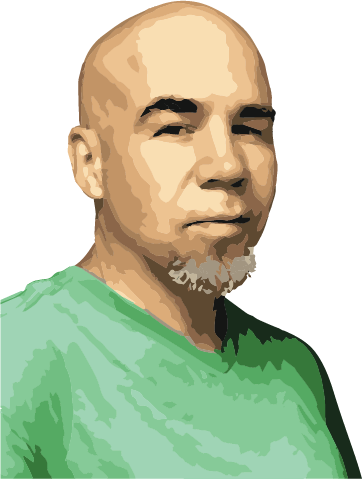
Few video journalists have shown the humanity of refugee children as poignantly as Thomas Nybo. A graduate of the University of Montana School of Journalism, Nybo has traveled to more than 90 countries, often to capture the stories of people in flight. Some of his short films and photos are haunting, others endearing. All touch their viewers on an emotional level, but do they also move minds?
Katie Riordan: Some images from the refugee crisis have jolted the public, like the one of Alan Kurdi. You take countless photos of children in dire situations for UNICEF. Does your work have impact?
Thomas Nybo: The work I do for UNICEF, whether it’s still photography or a short film, has the potential to be seen by millions of people. This past year, I directed a series of short films profiling refugee and migrant children, and these films have collectively been viewed more than 10 million times. I appear occasionally on CNN as a guest discussing my work and have blogged for The New York Times about my experiences covering migrants, so my UNICEF work gets seen by a lot of people. Does this translate into meaningful change? It’s not my place to say. But I do hear from many people who tell me I’ve forced them to think of the crisis on more human terms, and that, to me, is a good start.
KR: Oftentimes journalists will embed with a humanitarian organization to gain on-the-ground access. How does this affect journalistic work and objectivity?
TN: Just like with reporters embedded with the military, there’s a good chance that reporters will report more favorably on a humanitarian group they’re embedded with. Many organizations count on that happening, but it depends on the journalist and even the timing to a certain degree. Journalists tend to report more favorably on a humanitarian group in the days or weeks after a natural disaster, and then tend to be more critical (and sometimes only critical) as the one-year anniversary of the disaster approaches. I’ve seen plenty of journalists show up at the one-year mark looking to report on how the government or aid groups are screwing up before they’ve even seen any evidence. That said, it’s absolutely possible for journalists to be objective when embedded with a humanitarian organization, especially in the face of organizational malfeasance.
KR: There is criticism that the line between journalist and advocate is blurred. What, if anything, should be done to differentiate between the two labels?
TN: I have no problem wearing different hats on different assignments. When I’m working for UNICEF, my products are clearly labeled as such. I’ve never used my UNICEF access to gain access to a story I would be reporting independently for a news organization. The key is to be transparent about who you’re working for. Journalists have shown little hesitation in taking an organization to task when the organization has made mistakes. In particular, I’m thinking of the cholera epidemic in Haiti and the United Nations, and also the Red Cross and its failure to build many houses in Haiti after the earthquake, despite receiving many millions of dollars in donations earmarked for that very purpose. The system works best when reporters and organizations are transparent and honest. I’ve been fortunate for the past year covering the refugee and migration crisis in that, in almost all cases, my task for UNICEF has been to simply tell the stories of children who are fleeing one country and seeking a better life in another. There’s rarely any mention of UNICEF, and the work I’ve been doing is about as close as you can get to pure storytelling.
Katie Riordan is pursuing a master’s degree in environmental science and natural resource journalism at the University of Montana. She has reported from the Middle East, the Horn of Africa, Europe and, of course, Montana.








